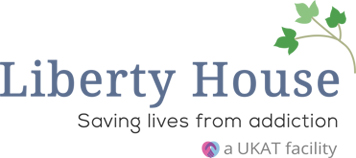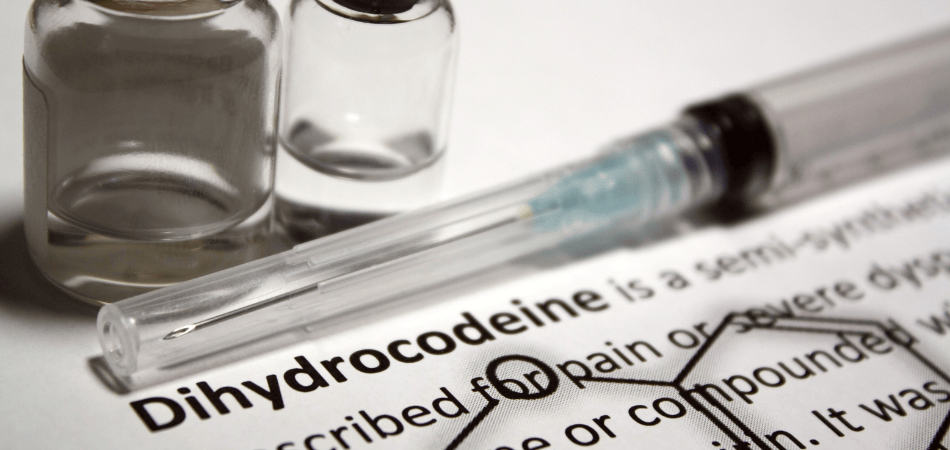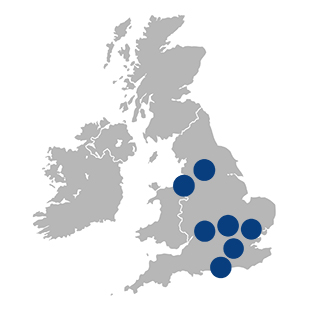
Written by:

Medically Reviewed by:
Last Updated:
February 17th, 2025
Dihydrocodeine Addiction
What is dihydrocodeine?
Dihydrocodeine is an opioid pain reliever often prescribed when standard painkillers like paracetamol or ibuprofen fall short.
It’s commonly used to treat chronic pain conditions, such as arthritis or to manage discomfort following surgery or injury. By binding to opioid receptors in the brain, dihydrocodeine helps ease pain perception, providing significant relief for those with moderate to severe pain.
In the UK, it’s a controlled medication, available only by prescription, with careful monitoring required to prevent dependency. When prescribed appropriately, it can be a valuable tool in pain management, offering relief where other options may not be effective.
Is dihydrocodeine addictive?
Dihydrocodeine can be addictive if its usage is not carefully monitored. It reduces pain signals, making it highly effective for managing pain, but it also triggers the release of dopamine, the “feel-good” chemical. Over time, repeated use can alter the brain’s reward system, making it harder for a person to feel pleasure or relaxation without the drug.
As the body adapts, tolerance can develop, meaning higher doses are needed to achieve the same effects. If the drug is stopped, withdrawal symptoms can appear, creating a cycle of dependency as users try to avoid discomfort. This can also lead to psychological dependence, where dihydrocodeine is relied upon not only for pain relief but also as a way to cope with stress. These combined effects make dihydrocodeine addictive, especially when used for extended periods or beyond prescribed doses.
How can a dihydrocodeine addiction form?
It can be confusing to come to terms with the fact that a medication like dihydrocodeine, which is used to help relieve pain, can also carry the risk of addiction. This is especially challenging to accept when it’s prescribed for good intentions and often works effectively in managing pain. Yet, like other strong pain-relievers, dihydrocodeine can lead to dependency and addiction under certain circumstances. One can face this kind of struggle in a few ways, and understanding these pathways may be the first step in preventing or identifying an issue.
Long-term use for pain management
One common pathway to dihydrocodeine dependency is through long-term use for chronic pain. Over time, the body becomes used to the medication, requiring higher doses to achieve the same relief. This tolerance can lead to physical dependency, making it difficult to stop or reduce use without experiencing withdrawal symptoms.
Not following prescribed dosages
Sometimes, even a small increase in dosage beyond what’s prescribed can set off a dependency. People in pain may feel tempted to take more than the recommended amount, hoping for quicker or stronger relief. This pattern can quickly lead to physical dependence, where the body becomes reliant on dihydrocodeine to feel normal.
Recreational use or misuse
In some cases, dihydrocodeine may be used recreationally, either by the person it was prescribed to or by someone obtaining it elsewhere. Recreational use, especially when taken in larger doses, increases the risk of developing an addiction due to the feelings of euphoria the drug can produce at higher doses.
Psychological dependence
For some, the relief dihydrocodeine provides isn’t only physical but psychological. When it becomes a routine source of comfort or a way to cope with stress or other emotional issues, psychological dependence can develop. In these cases, a person may feel they need dihydrocodeine to manage their day-to-day challenges, making it hard to stop using it even if physical dependence hasn’t fully formed.
What are the signs of dihydrocodeine addiction?
Recognising the signs of dihydrocodeine addiction is essential to catching issues early, whether in yourself or someone you care about. The quicker signs of a problem are identified, the quicker steps can be taken to seek help and prevent deeper dependency. Here are some key signs to look out for:
Physical signs
- Increased tolerance: Needing larger doses to achieve the same effect.
- Drowsiness or fatigue: Persistent tiredness, even after rest.
- Constipation: Common among opioid users and can become chronic.
- Dry mouth and sweating: Noticeable changes in hydration levels and excessive sweating.
- Pupillary constriction: Small or pinpoint pupils, especially noticeable after taking the medication.
Psychological signs
- Mood swings: Shifts between euphoria when the drug is taken and irritability when it’s not.
- Anxiety and depression: Increased levels of anxiety, sadness or a feeling of hopelessness.
- Mental fog and memory issues: Difficulty focusing, remembering things or making decisions.
- Obsession with dosing: A constant preoccupation with when the next dose is due.
Behavioural signs
- Social withdrawal: Avoiding family, friends or activities once enjoyed.
- Doctor shopping: Visiting multiple doctors or pharmacies to obtain more dihydrocodeine.
- Neglect of responsibilities: Ignoring work, school or family duties due to the drug’s effects.
- Secrecy and lying: Hiding dihydrocodeine use from others or lying about its extent.
- Financial issues: Spending more on medication or, in some cases, seeking the drug illegally.
Am I addicted to dihydrocodeine?
Just because Dihydrocodeine is prescribed doesn’t mean that dependence is something only your doctor is responsible for monitoring. This medication is often essential for managing pain, yet over time, it can become difficult to distinguish between needing it for relief and relying on it in other ways. Checking in with yourself can be a crucial step in making sure that dependency doesn’t quietly take hold. Here are a few questions to consider:
- Have you found yourself thinking about Dihydrocodeine outside of times you need it for pain relief?
- Do you need to take higher doses of Dihydrocodeine to achieve the same relief you once did?
- Have you attempted to cut back or stop taking Dihydrocodeine but found it difficult due to withdrawal symptoms or a persistent desire to use it?
- Is your Dihydrocodeine use starting to affect your daily activities, relationships or responsibilities?
- Do you feel stressed or uneasy when your prescription is running low or if you can’t take your usual dose?
If you answered ‘yes’ to any of these questions, reaching out for support may be a good idea. Recognising these signs early is an empowering first step toward maintaining control over your health and well-being.
Can Liberty House help me with a dihydrocodeine addiction?
At Liberty House, we understand how easy it can be to become dependent on dihydrocodeine. If you’ve noticed yourself relying on it more frequently, know that you’re not alone, and we’re here to support you every step of the way.
Our dedicated dihydrocodeine rehab programme begins with a medically supervised detox, ensuring your comfort and safety. Following detox, our therapeutic support includes one-to-one counselling and group therapy designed to help you understand and overcome the reasons behind your dependency.
We also provide aftercare services that provide a solid foundation for recovery.
Reach out to Liberty House today and learn that together, we can help you find freedom from addiction.







